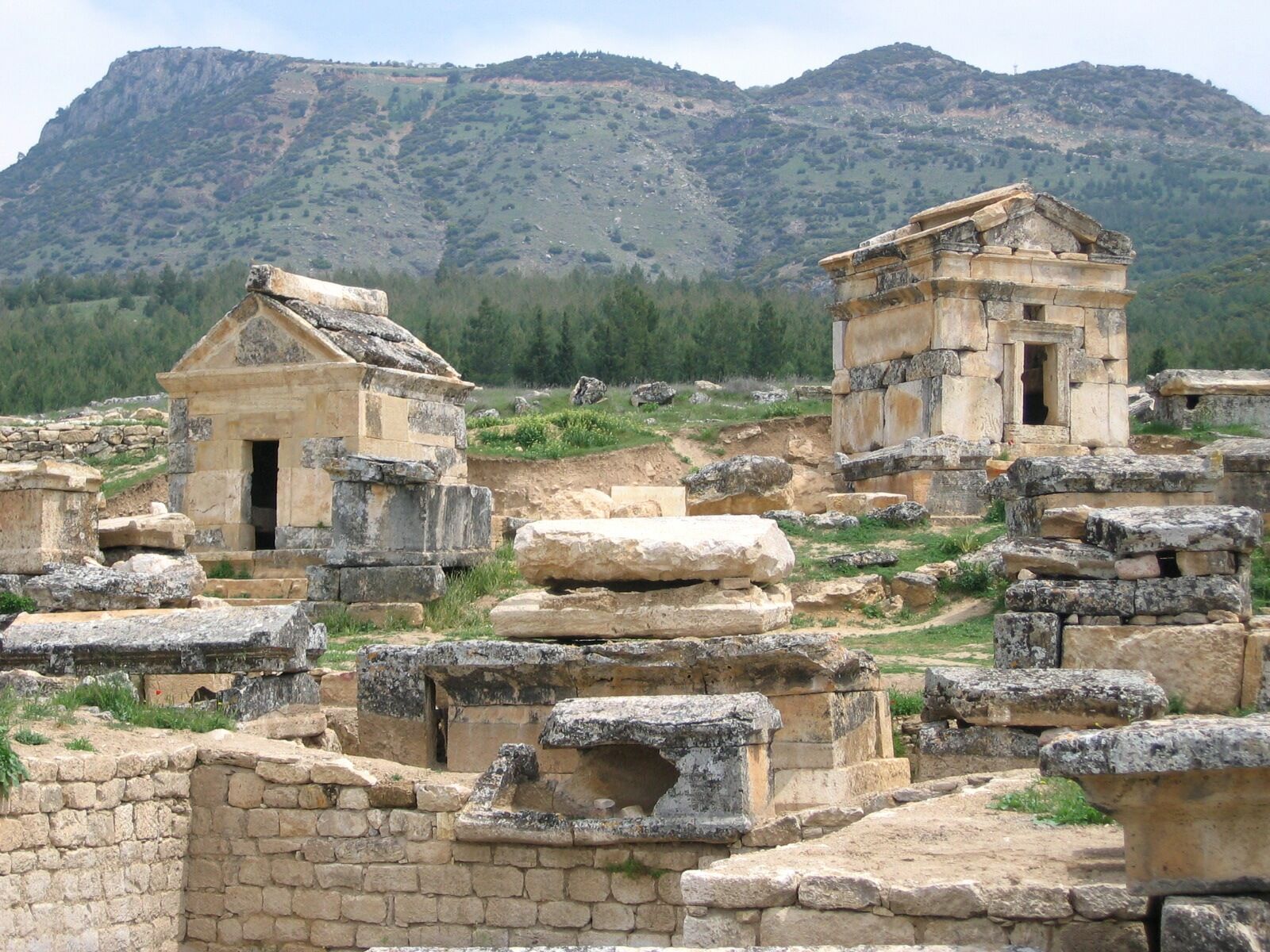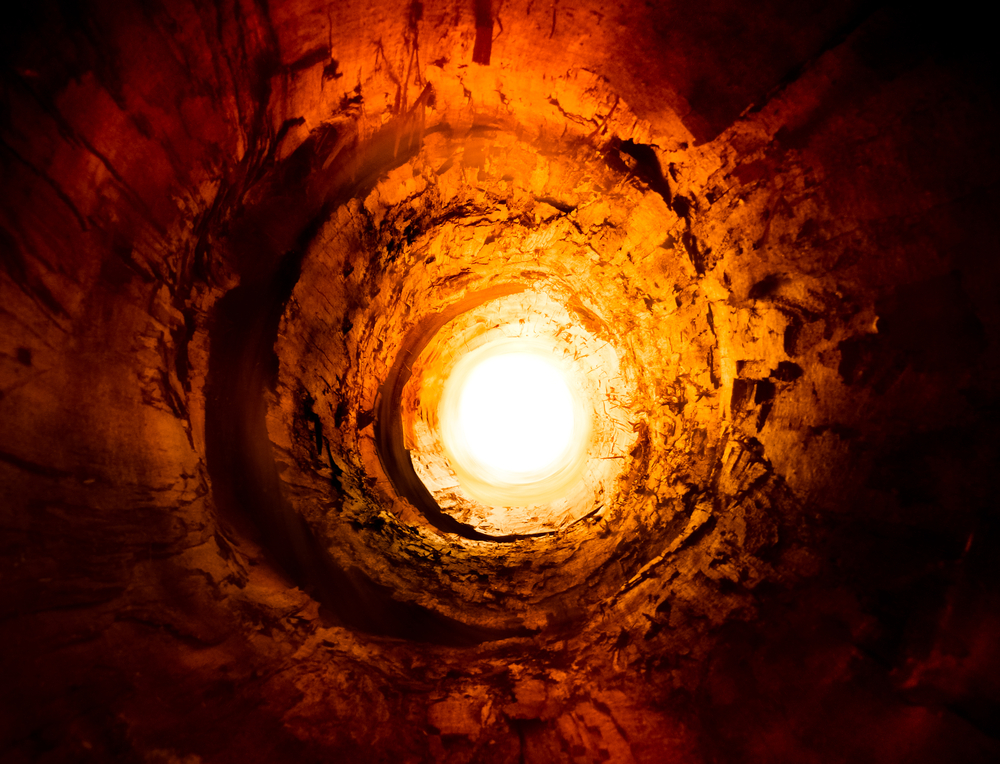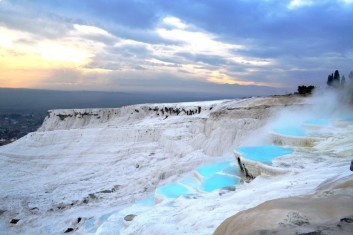 Pluto’s Gate at Hierapolis or the Ploutonion was a religious site that was dedicated to the ancient god Pluto. It was located in the ancient city of Hierapolis near Pamukkale in modern Turkey's Denizli Province. The site was first discovered in 1965 by archaeologists from Italy, who made their findings on their excavations commonly known in the following ten years. The precise age of the site is unknown but the nearby city of Hierapolis was said to have been founded around 190 BC.
Pluto’s Gate at Hierapolis or the Ploutonion was a religious site that was dedicated to the ancient god Pluto. It was located in the ancient city of Hierapolis near Pamukkale in modern Turkey's Denizli Province. The site was first discovered in 1965 by archaeologists from Italy, who made their findings on their excavations commonly known in the following ten years. The precise age of the site is unknown but the nearby city of Hierapolis was said to have been founded around 190 BC. Where is the Gate to Hell in Turkey?
The site was built on top of a cave that emits toxic gases; this was the reason why it was used as a religious sacrifice and entrance to the underworld. The Ploutonion was described by several ancient writers as a tiny cave, just large enough for one person to enter with stairs that lead down, and due to the underground geologic activity a suffocating carbon dioxide gas is present. Behind the chamber is a large indent in the rock, where rapid streams of hot water flow and release sharp smelling gasses. An enclosed area of 2,000 square metres (22,000 sq ft) stood in front of the entrance.
Recent confirmation shows that there is no reason to doubt that the site found in the ancient Phrygian city of Hierapolis, near Pamukkale in Turkey, is that of Pluto's Gate, or the "gate to Hell" as it is being referred to, a cave which in Greek Roman mythology and tradition was celebrated as the entrance to hell.
Two marble statues that were believed to have guarded the deadly cave have been revealed. The first statue was of a snake rolled on to itself which is a known symbol of the underworld. The other is of Kerberos, or Cerberus, the three-headed watchdog of hell. The marble statue standing over 4 feet high is similar to the Kangal, the Anatolian shepherd dog.
 Discovery of the Gate to Hell:
Discovery of the Gate to Hell:The discovery of Pluto’s Gate was made in March 2013, by a team of Italian archaeologists headed up by Francesco D’Andria the professor of classic archaeology at the University of Salento. The archaeologist’s also unearthed parts of columns that bore inscriptions to the top which are believed to be dedicated to Pluto and Kore – the deities of the underworld.
The dig also revealed the source of the thermal springs which are the reason for the formation of the famous travertine terraces. Professor D’Andria confirmed that the Pamukkale springs definitely began in this cave.
The hot springs which are believed to have healing powers are what made the Roman city of Hierapolis which is now a World Heritage Site such a popular destination for the pilgrims.
Both of the marble statues emerged from out of the water, which confirms beyond reasonable doubt that the site is Pluto’s Gate. Historic scriptures describe the cave as being filled with deadly mephitic vapours.
Strabo the Greek geographer (64 – 63 B.C to approximately 24 A.D) wrote in detail about the cave. He stated that the space was so dense with vapour that the ground was barely visible. Any animal that ventured inside would die immediately due to the extreme levels of carbon dioxide fumes. The account given by Strabo was also confirmed by D’Andria and his colleagues as they found several bodies of birds and insects dead in the entrance to the cave.
 The archaeologists on a previous excavation had also uncovered the remnants of a temple, a pool and a series of steps directly above the cave which all matched the descriptions that had previously been given of the site according to ancient sources.
The archaeologists on a previous excavation had also uncovered the remnants of a temple, a pool and a series of steps directly above the cave which all matched the descriptions that had previously been given of the site according to ancient sources.People would have come to the site to watch sacred rituals from the steps above the cave opening, whilst the priests made the sacrifices to Pluto. The animals were led into the cave and then dragged out dead.
Archaeological evidence suggests that the site was completely operational until the 4th century CE, but still remained a place of occasional visitation over the next two centuries. The temple was destroyed in the 6th century CE, while it is believed that later earthquakes may have damaged the site further.
About Pamukkale:
Pamukkale is the most beautiful place and so worth a visit. With hot springs and terraces that have formed from carbonate minerals that have been flowing through the water for thousands of years. The site has been used for thousands of years by bathers and worshippers.
The ancient ruins of Hierapolis were fist found at this site as early as the third century B.C. In the second century B.C Hierapolis became a thermal spa, attracting people from far and wide to soak away their ill health in the waters. Great baths were constructed out of enormous stone blocks which can still be seen today.
Tourists have flocked to the area for years with tourism reaching its highest in the middle of the 20th century. Hotels were erected over the ruins of Hierapolis which in turn caused damage to the foundations. Roads were also built for access in and out and this resulted in the change of the overall look and ambience. Fortunately when the site was declared as a World Heritage Site the roads were all closed and the hotels demolished.
 There is an archaeology museum that now stands on the site where the Hierapolis Roman Baths stood. The museum houses a wealth of ancient artefacts and from relics from all of the nearby settlements.
There is an archaeology museum that now stands on the site where the Hierapolis Roman Baths stood. The museum houses a wealth of ancient artefacts and from relics from all of the nearby settlements.Pamukkales’ entire site is approximately 2700 metres long and 600 metres wide. In total there are 17 hot springs with a temperature range of a comfortable 35 degrees to a boiling 100 degrees.
If you visit Pamukkale now, shoes are not allowed in order to continue with the preservation of the site and prevent any further damage. The bathing pools can be entered via a toll booth and then a barefoot climb up the cascades. Alternatively the site can be entered from Hierapolis side which means that the climb is avoided but you will miss out on all of the beauty.








